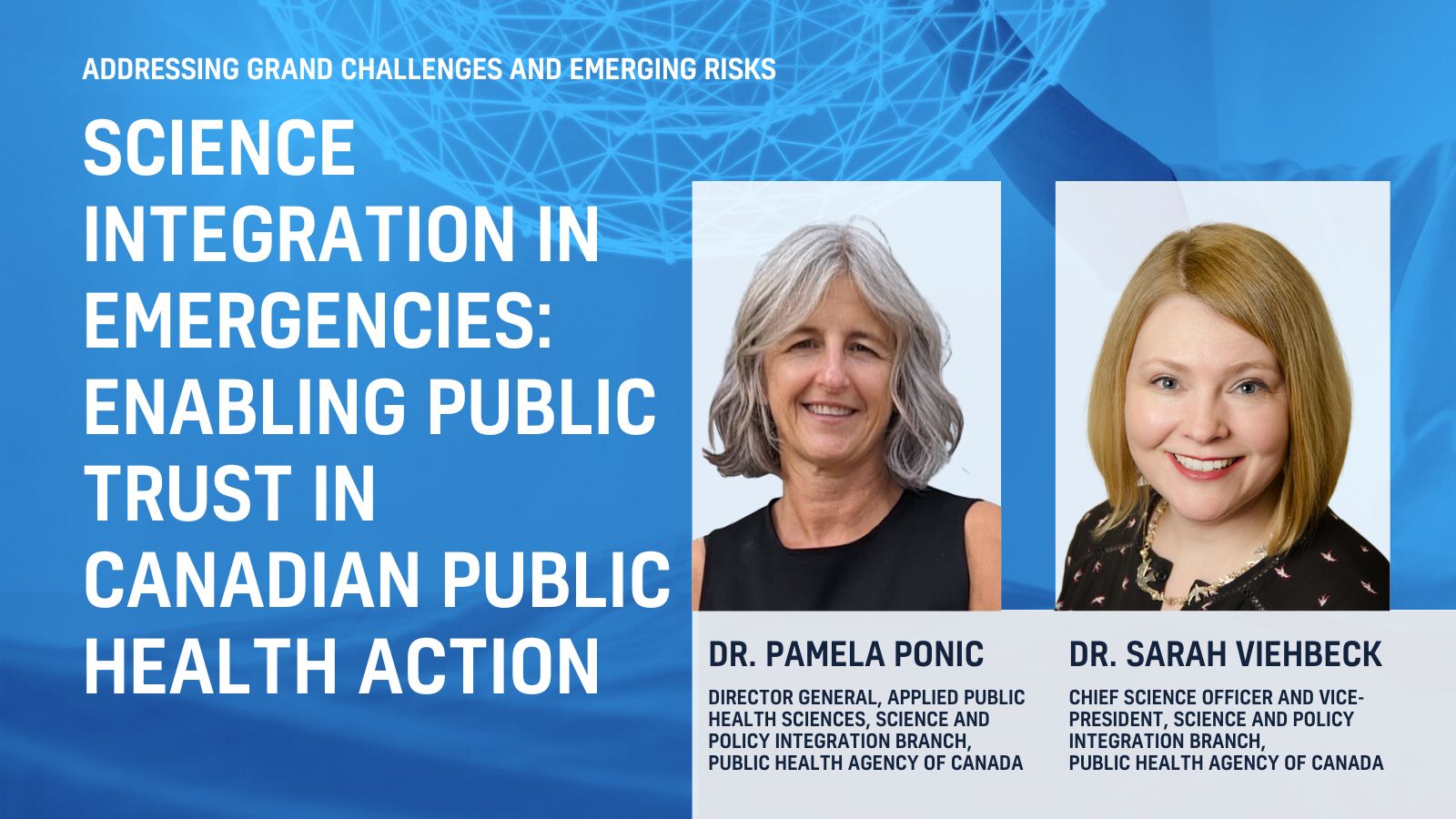Science Integration in Emergencies: Enabling Public Trust in Canadian Public Health Action

Author(s):
Pamela Ponic, PhD
The Public Health Agency of Canada
Director General, Applied Public Health Sciences, Science And Policy Integration Branch
Sarah Viehbeck, PhD
The Public Health Agency of Canada
Chief Science Officer
Disclaimer: The French version of this text has been auto-translated and has not been approved by the author.
In times of crisis, Canadians look to their public health institutions not only for guidance, but for assurance that advice and decisions are grounded in evidence. The COVID-19 pandemic was an unprecedented test, revealing the strengths and vulnerabilities of our national science ecosystem. Now, as we navigate an era marked by global health threats, climate emergencies, and rapidly shifting information landscapes, the imperative for integrating and coordinating science functions across disciplines, sectors, and institutions has never been more critical.
In December 2024, the Public Health Agency of Canada (PHAC) published its Science Strategy: Advancing health, well-being, and equity through science, charting an inclusive and forward-looking vision for its contributions to public health science.1 Anchored in principles of equity, transparency, and collaboration, the Strategy guides the Agency in advancing its mission to improve the health of all people and communities in Canada by addressing public health priorities through science, innovation, service delivery, and collaborative action. It explicitly prioritizes integrating science into public health emergency preparedness, response, and recovery efforts, building on the lessons from the COVID-19 pandemic and establishing resilience in the face of emerging threats. PHAC’s Science Strategy not only strengthens the Agency’s commitment to scientific excellence, but it also positions science integration in emergencies as an imperative for building and maintaining public trust.
What is Science Integration?
Science integration is about building a coordinated, responsive public health ecosystem that facilitates the creation and translation of knowledge. It begins with establishing and maintaining foundational elements of the public health workforce, backbone science and research infrastructure, governance, policy, and legislation that are ready to be rapidly mobilized. Within the Public Health Agency of Canada, we operationalize science integration through five core science functions:
- Evidence Synthesis: Bringing together findings from across studies to form a comprehensive, context-specific collation of current understanding.
- Research Prioritization: Identifying and re-identifying knowledge gaps to answer the questions that matter most to public health action as preparedness and response needs evolve and evidence accrues.
- Priority-Driven Research: Accelerating the deployment of intramural research funding and processes to address core knowledge gaps and liaising with extramural research funders to do the same, without compromising ethics or equity.
- Science Advice: Translating evidence and expertise into actionable options, recommendations, and strategic guidance for decision-makers.
- Evidence-Informed Decision Making: Integrating scientific, technical, and contextual knowledge into policies and actions.
These functions are iterative and mutually reinforcing aspects of a living evidence system. Gaps identified by evidence syntheses inform research priorities to spur new evidence generation, advisory structures with experts across jurisdictions and sectors draw on their expertise, ways of knowing, and lived experience to make sense of evolving evidence and evidence gaps to inform decision-making within shifting landscapes.
Crucially, coordination means engaging across sectors from federal and provincial agencies, Indigenous governments and organizations, academic networks, industry, healthcare providers, and communities. It means incorporating diverse perspectives and ways of knowing, deploying standardized yet flexible methodologies, and assessing and re-assessing evidence as emergencies unfold.
Why Science Integration Matters in Emergencies
The foundation of effective emergency response lies in timely, relevant, and evidence-informed decisions. This is not a matter of siloed expertise, but an orchestration of knowledge—from epidemiology and genomics to behavioural science, policy analysis, and community engagement. Reviews of Canada’s pandemic responses underscored the importance of coordination of key science functions during emergency response.2,3,4 If not done appropriately, fragmentation of science functions can lead to slow, inconsistent, and sometimes inequitable responses, as well as duplication of effort and resource inefficiencies. Integrated, coordinated science systems are more nimble and capable of mobilizing knowledge at the speed and scale required by modern crises.
PHAC’s Science Strategy articulates a broad and inclusive view of science that encompasses various epistemological approaches and multiple ways of knowing. Braiding and weaving these multiple ways of knowing is an essential building block for integrating science in emergencies, each with its unique lens on risk, preparedness, response, resilience, and recovery.1
Finally, integration is not just a technical challenge; it is an ethical imperative. The COVID-19 pandemic laid bare the health inequities faced by marginalized and underserved populations. Coordinated science must explicitly integrate principles of equity, diversity, and inclusion, addressing the social and structural drivers of disparities, so that evidence-informed decision-making is contextually relevant and inclusive.
Building Trust Through Science Integration
Trust in public health institutions is essential for effective emergency response but has to be fostered as part of emergency preparedness. The public is more likely to follow public health guidance, such as vaccination recommendations, when they trust that decisions are based on transparent and competent science.5 Multiple national surveys show a clear link between institutional trust and public health outcomes.5,6,7 Those who trust the federal government, for instance, are more than twice as likely to say they will get vaccinated in a future pandemic.5
But trust is fragile. The past few years have seen a troubling erosion of public confidence, fuelled in part by misinformation, polarization, and perceptions of opaque decision-making processes. Canadians want to see not just the outcomes, but also the reasoning and evidence behind decisions and greater operational transparency in how government works.8,9 Studies show that explaining how and why decisions are made, particularly during periods of uncertainty, is more effective than simply sharing results. The evidence is clear: public health institutions must earn trust through coordinated, open, and responsive science.8 PHAC’s Science Strategy recognizes this imperative, embedding a commitment to open, ethical, and transparent science communication as a foundation for sustaining public trust.
The Path Ahead: Designing for Trust
If Canadians are to trust their public health institutions during crises, these institutions must enhance focus on how they work and what they do. This means:
- Highlighting evidence-based expert advice and being transparent where scientific consensus does not exist.
- Leveraging trusted messengers, such as local healthcare professionals, to extend credibility into communities.
- Providing scientific and operational transparency: not just the result, but the rationale, process, and evidence behind decisions.
- Engaging communities early and meaningfully in co-designing solutions and sharing lived experience.
- Proactively addressing misinformation through monitoring, pre-bunking, and literacy campaigns tailored to diverse information environments.
Integration as the Basis for Resilience
The Canadian public health system stands at a crossroad. The lessons of recent years must not be lost; they must be institutionalized in a robust, integrated science ecosystem that is ready for emergencies. Coordination is not just about efficiency. It is about trust, legitimacy, and the social contract between public health institutions and the communities they serve. PHAC’s Science Strategy lays out a framework through which science excellence can be fostered in support of an open, responsive, and equity-oriented eco-system that supports a Canada that is resilient in the face of emerging challenges.
References
- PHAC Science Strategy 2024-2025 to 2029-2030. https://www.canada.ca/content/dam/phac-aspc/documents/services/publications/science-research-data/science-strategy-2024-2025-2029-2030/science-strategy-2024-2025-2029-2030.pdf
- Strengthening the Use of Science for Emergency Management in Canada. https://science.gc.ca/site/science/sites/default/files/documents/Science_for_Emergency_Management.pdf
- Learning from SARS Renewal of Public Health. https://science.gc.ca/site/science/sites/default/files/documents/Science_for_Emergency_Management.pdf
- The Time To Act Is Now: Report of the Expert Panel for the Review of the Federal Approach to Pandemic Science Advice and Research Coordination. https://www.canada.ca/content/dam/hc-sc/documents/corporate/about-health-canada/public-engagement/external-advisory-bodies/review-federal-approach-pandemic-science-advice-research-coordination/time-to-act/time-to-act.pdf
- Trust, Information, and Digital Ecosystems Study (TIDES). https://publications.gc.ca/collections/collection_2025/bcp-pco/CP22-214-2024-1-eng.pdf
- HABIT Wave 1 – National perspective on Canadians’ public health outcomes and individual, interpersonal, and systems-level factors. Government of Canada. https://impact.canada.ca/en/behavioural-science/habit/wave_1
- TRUST Dynamics and Equity in Public Health. https://www.trustinhealth.ca/findings
- Operational Transparency Case Study. https://impact.canada.ca/en/reports/operational-transparency-case-study
- Ripamonti, J.P. (2024). Government Information Quarterly. Elsevier. Volume 41, Issue 3, September.
Acknowledgements: the authors would like to acknowledge contributions from Sherrilee Bushell-Viau, Erin Dunn, Sara Harbord, and David Wilkinson.

